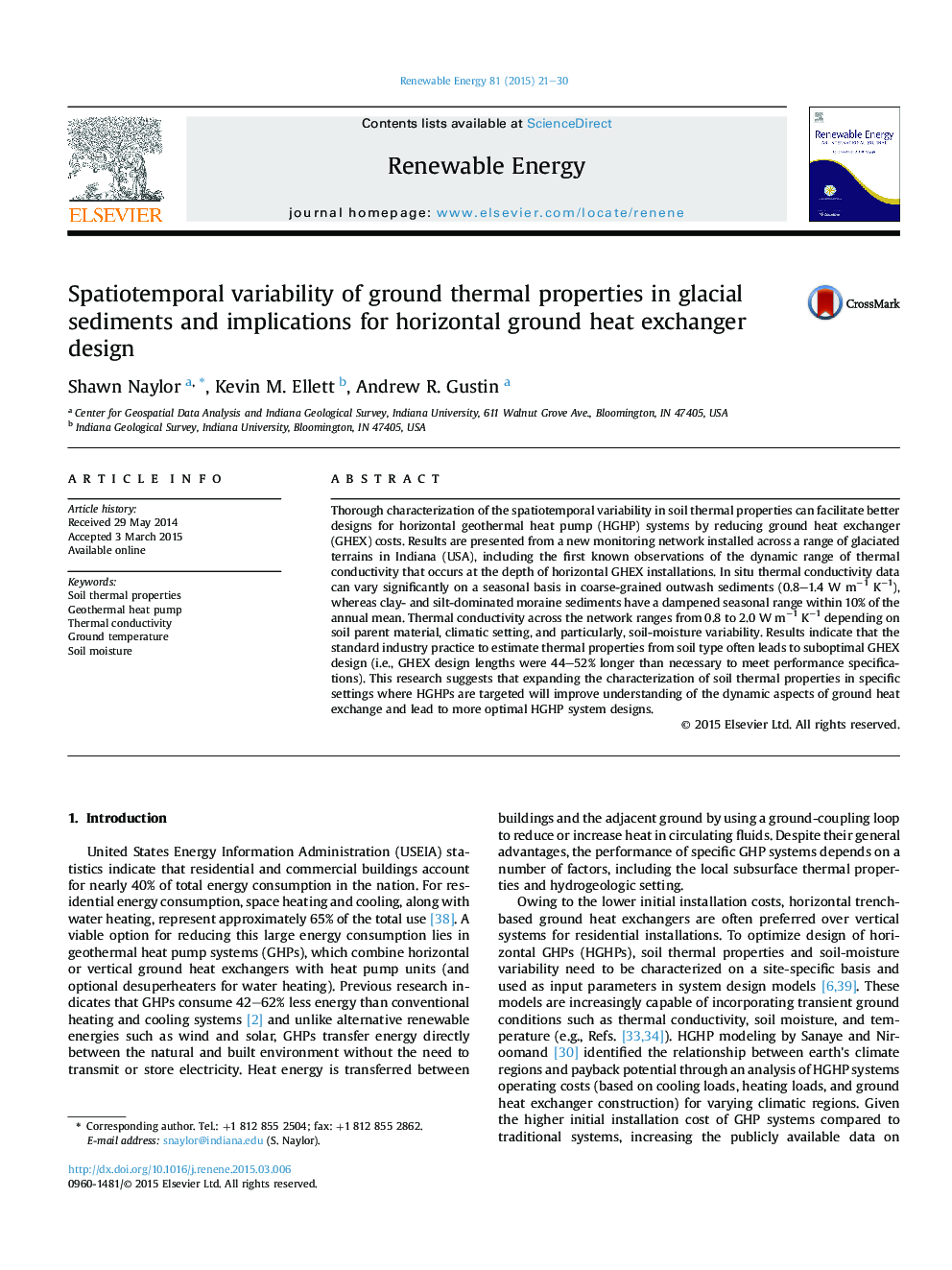| Article ID | Journal | Published Year | Pages | File Type |
|---|---|---|---|---|
| 6766771 | Renewable Energy | 2015 | 10 Pages |
Abstract
Thorough characterization of the spatiotemporal variability in soil thermal properties can facilitate better designs for horizontal geothermal heat pump (HGHP) systems by reducing ground heat exchanger (GHEX) costs. Results are presented from a new monitoring network installed across a range of glaciated terrains in Indiana (USA), including the first known observations of the dynamic range of thermal conductivity that occurs at the depth of horizontal GHEX installations. In situ thermal conductivity data can vary significantly on a seasonal basis in coarse-grained outwash sediments (0.8-1.4Â WÂ mâ1Â Kâ1), whereas clay- and silt-dominated moraine sediments have a dampened seasonal range within 10% of the annual mean. Thermal conductivity across the network ranges from 0.8 to 2.0Â WÂ mâ1Â Kâ1 depending on soil parent material, climatic setting, and particularly, soil-moisture variability. Results indicate that the standard industry practice to estimate thermal properties from soil type often leads to suboptimal GHEX design (i.e., GHEX design lengths were 44-52% longer than necessary to meet performance specifications). This research suggests that expanding the characterization of soil thermal properties in specific settings where HGHPs are targeted will improve understanding of the dynamic aspects of ground heat exchange and lead to more optimal HGHP system designs.
Keywords
Related Topics
Physical Sciences and Engineering
Energy
Renewable Energy, Sustainability and the Environment
Authors
Shawn Naylor, Kevin M. Ellett, Andrew R. Gustin,
